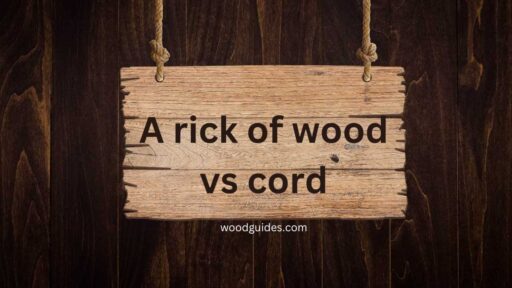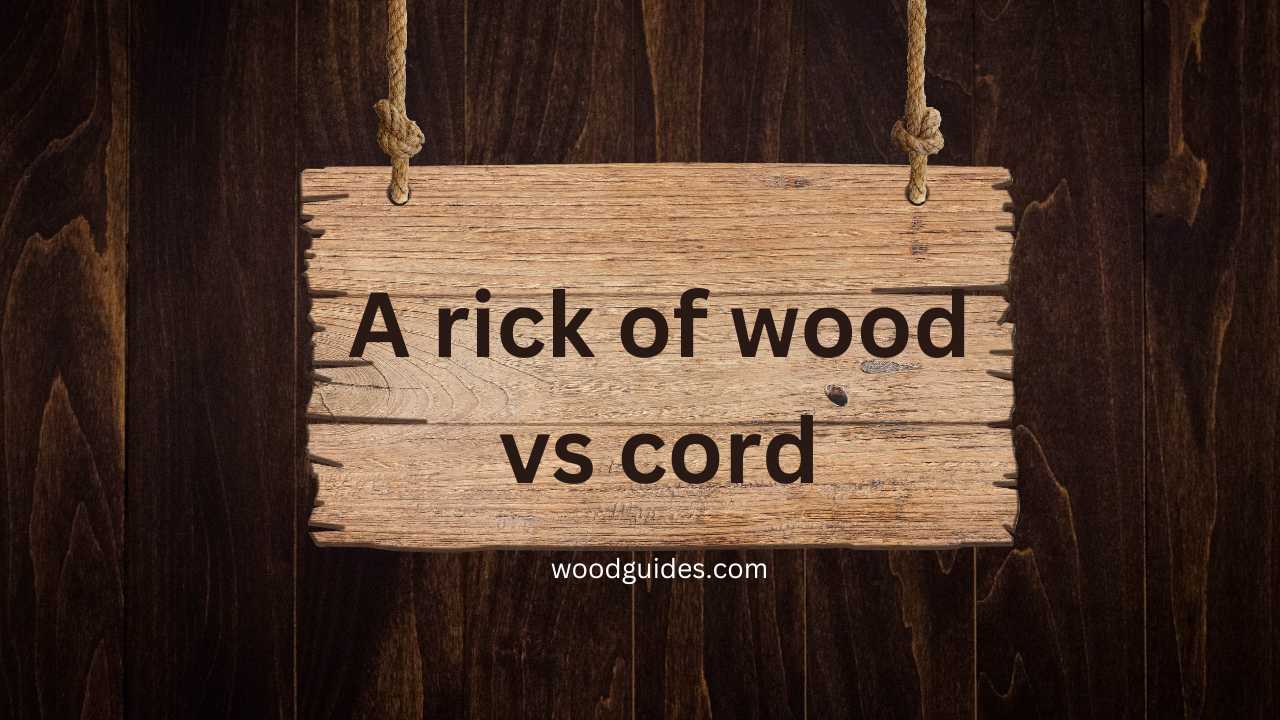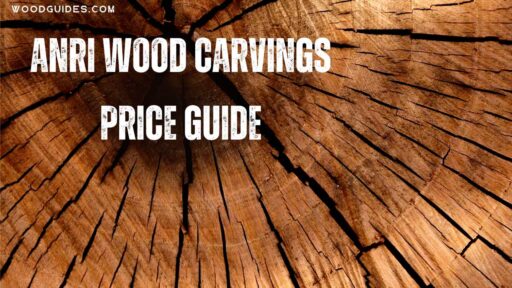Learn about the differences between A rick of wood vs cord and a cord on our website. Gain valuable knowledge to help you decide which option is right for your firewood supply. Visit us for more details!
When the winter cold arrives, or you simply want to spend a cozy evening by the fire, picking the right type of firewood becomes crucial. For most people, this starts with knowing how much wood they need — and this is where the “A rick of wood vs cord” and “cord” debate begins. Both represent a significant amount of firewood woods, but they do so in different ways that can affect your experience, such as price and convenience or warmth in general. In this article, we will go through everything related to firewood so that, in the end, you know what suits your fireplace best.
Wood Measurements and Terms
Before comparing these two units, let’s define some terms for firewood measurement.
Cords
A cord is the standard unit of measurement for firewood in Canada and United States. It refers to a neatly stacked pile that measures 8 feet long by 4 feet high by 4 feet wide which gives a total volume of 128 cubic feet. This measurement was based on how firewood’s were traditionally stacked up together during transportation using ropes or cords.
Rick
Rick is another less-known measure used to quantify amounts of wood suitable for burning purposes depending on where you are located geographically. Generally speaking, it consists of four-foot-long stacks above ground level, but depth may vary from region to region as well; it is sometimes also called a face cord or stove cord.
Cost Comparison And Convenience
One major difference between ricks and cords is their cost implications; due to its sinewiness, mostly people pay more when they buy cords than ricks though not always because buying one might save you trips later too since it has more load thus makes less movement necessary before restocking your stockpile with logs again.
On another note, however, if storage space is an issue or maybe someone just wants something smaller sized that fits well in his/her fireplace, then getting oneself a rick would work out perfectly fine, too. Also, if only occasional use demands small amounts of fuel, then opt for ricks as this might be more economical.
Which Is Best For Your Home?
In the end, the choice between rick and cord depends entirely on individual preferences or needs. If you have enough space to store large quantities of firewood that will be used frequently over time, buy cords, but where storage is limited or the amount required is small, get yourself some risks.
Also consider type species because certain ones burn hotter and longer than others hence suitable for colder regions with high frequency while others are better off in places experiencing warm weather once in a while such as pine or fir softwood.

Heating Potential And Duration
Cords generally outperform their counterparts when it comes to heating abilities since they take up more volume. The higher the density achieved when stacking woods together tightly, the longer they will last burning, thus providing warmth to houses.
In front of comparing, it’s crucial to know what “rick” and “cord” mean on your firewood receipt. The cord is a standard unit of measure for firewood, which means 4 feet by 4 feet by 8 feet or 128 cubic feet in total stack legally. On the other hand, the risk is less clear because it’s often referred to as a face cord; this can be described as one stack that measures 4 ft high and 8 ft long with lengths differing from dealer to dealer but usually around 16 inches.
This difference is simple: more wood fits into a cord than a rick. But how does that affect the quality of our burning experience?
Energy Inside: Heating Efficiency – Rick Vs Cord
The volume disparity between these two units has everything to do with heating efficiency. Since there is more timber in a full cord, you are likely to get an even longer burn time if there is no constant heat throughout. This makes economic sense for people who use up much firewood, hence making one cord cheaper over time compared to several risks, which may be seen as user-friendly, especially when dealing with sedentary burners or secondary smaller fireplaces.
The kind and condition of wood also matter besides its volume alone. Hardwoods like oak, hickory, and maple have higher BTUs per cord than softwoods thus they would burn better too. Additionally, seasoned woods perform well on efficiency scales due to their ability to produce more heat energy while emitting cleaner smoke that doesn’t cause creosote buildup.
Crunching Numbers: Convenience vs Affordability
When calculating costs between the two measurements, things become less straightforward since sometimes upfront pricing can make one look cheaper than another, but when evaluated per cubic foot then, cords offer better value most times unless otherwise dictated by temporary heating needs or financial constraints within which case stacking up single stacks from time-to-time could save money.
Again, in terms of convenience – long-term supply delivered by a cord outweighs frequent reordering required with smaller loads like ricks although storage and handling advantages associated with their compactness could be cherished, especially by individuals living in small spaces or those physically challenged.
Estimating Your Load: How Much Wood Do You Need?
Several factors come into play when trying to estimate the quantity of wood that should be supplied and consumed, such as the size of the space being heated and the efficiency rating for the stove/fireplace used vis-à-vis intended frequency duration intensity burning planned for it. General rules suggest 1 – 2 cords per season, but this varies greatly depending on individual circumstances; hence, it’s advisable to keep an eye on consumption over a given period and adjust accordingly, factoring in extreme cold snaps or inefficient burnings, among others; many homeowners find one cord enough at least initially then they gather more backup risks where necessary.
An Eco-Conscious Hearth: Sustainability in Firewood
It cannot be overstated just how much environmental impact our firewood decisions make; therefore, we must ensure responsible use coupled with sustainable harvesting, which helps protect forests along with other ecosystems. Always make sure your supplier complies fully with local regulations governing timber operations also, considering proximity between source points reduces emissions caused during transportation stages.
Furthermore, planting trees and keeping them alive provides an excellent opportunity for offsetting carbon footprints generated through burning logs; every cord/rick utilized needs to be matched by commitment towards reforestation, thus ensuring a continuous cycle involving renewable utilization of wood resources.
Voices From The Fireplace: Real-world Experiences With Firewood
There’s no substitute for learning from others. Talk to people in your area who use firewood, listen to what they have to say, and share stories about what types of wood you like best or how you use it. Some may rave about how easy it is to move around a rick, while others might extol the virtues of having enough fuel to last all winter with one cord.
This is where you’ll pick up tips and tricks that no book could ever teach you — because they’re born out of real-life experiences. And these insights are often the ones that lead to smarter choices down the road.
Making Your Decision Stick
After sorting through stacks of information, there will come a time when all that’s left is considering your specific situation. Think about your heating needs, space restrictions, environmental goals, and financial realities before making any moves.
Whether you choose a cord based on its reliability or go for risk because it’s so handy, none of that matters as much as being intentional about what goes into your firebox. The wood you burn doesn’t just warm up four walls; it speaks volumes about who you are as an individual and how much care should be given back to Mother Earth itself. So make every log count.
The fact remains that firewood plays a central role in winter and fireside lore alike — but it also represents something much greater than itself. Wood isn’t just measured by feet or cubic yards; it measures our lives, our warmth, our love for this planet, and even our very essence! Find the piece (or pieces) that resonate most deeply within yourself – not only burdening one’s load but cherishing such memories, so let those flames roar high into eternity, my friends!! With this in mind, remember one thing when stacking your wood pile during these cold months: The choice rests solely upon you! Have fun burning them all down safely! Happy burning!
Frequently Asked Questions (FAQs)
How can you tell if the wood is seasoned?
Typically, the wood has been dried for 6-12 months and has a moisture content of 20% or less. Signs that these conditions have been met include lighter weight, cracks on the ends, and a hollow sound when two pieces are struck together.
Can I burn freshly cut firewood?
No. It is not recommended to use green/wet firewood because it will produce inefficient combustion as a result of high moisture content, which leads to more smoke production along with creosote buildup inside your chimney.
What amount of space does one cord of wood occupy?
A standard full cord of wood measures 4 feet high x 4 feet wide x 8 feet long (128 cubic feet). If properly stacked this way.
How should I store my firewood?
Keep it off the ground but covered on top with open sides so air can circulate by reducing dampness, thus preventing rotting and attracting insects/pests
How long will firewood last?
Properly dried(Seasoned) wood can last up to four years although one-year consumption provides optimum burning efficiency.
Is buying in ricks or cords better?
It all depends on storage size, budget, and frequency of use of this heat source. Cords offer more value for money, especially if used continuously over time, while risks may be convenient when only needed once in a while due to limited storage capacity.
Conclusion of A rick of wood vs cord
It’s not just about which firewood to choose. It is an earth-conscious, pocket-friendly, and deep-rooted decision that affects how warm or cozy your place will be during the colder months of the year. The discussion on whether it should be a rick or a cord brings to light the significance of knowing what you need, understanding various wood types’ features as well, and considering the environmental consequences arising from such choices.
Therefore, by taking into account these factors thoughtfully, a snugly efficient and sustainable fireside can be ensured. When winter air becomes chilly, and the fireplace starts inviting, then this insight gained shall light up the selection process for you towards convenience vs. cost vs conscience perfect balance. May we have a winter full of warmth with a wise selection for burning!





